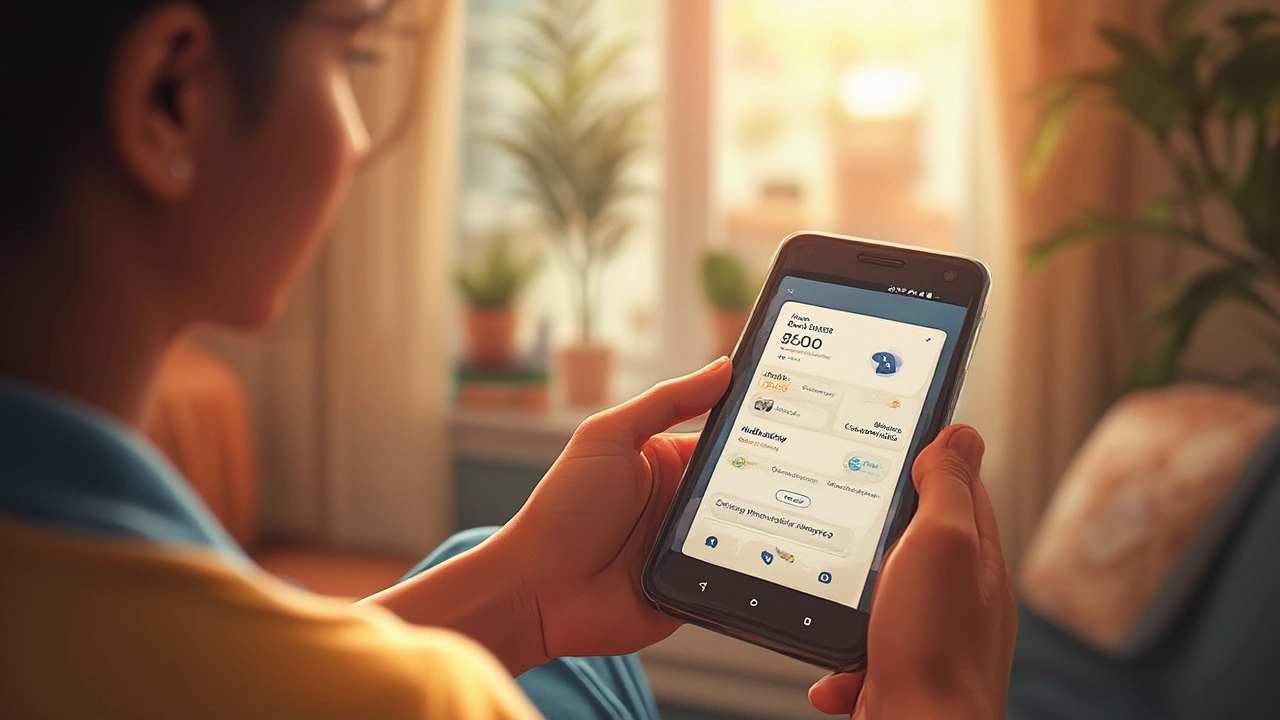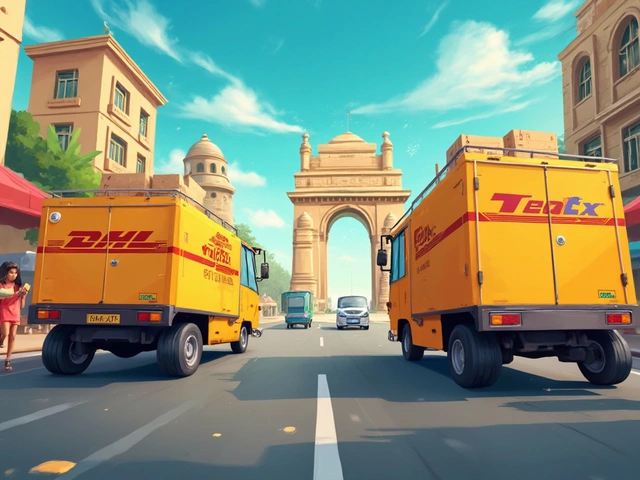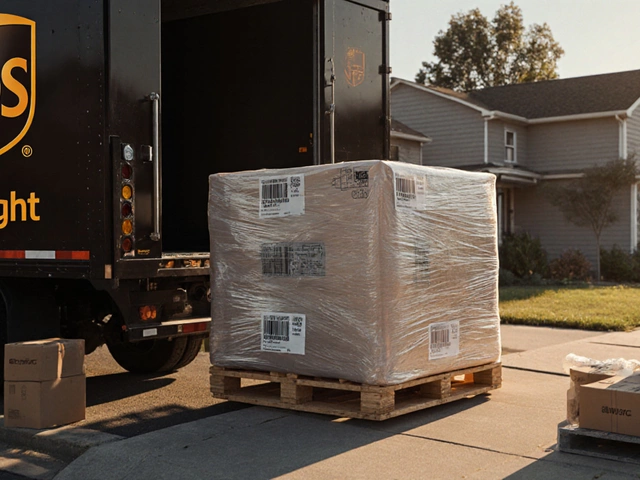Ever sat in your car after a grocery pickup and watched someone speed through the parking lot wearing a bright vest and juggling a stack of Walmart bags? That’s probably a Spark driver. Yeah, these days, food and goods zip around with barely a human handshake, but there’s a hidden world behind those fast deliveries. Driving for Spark is not as laid-back as it seems on your neighbor’s TikTok feed, but if you crave control over your schedule, steady pay, and daily surprises (including the odd runaway shopping cart), Spark just might be your next gig. Let’s pull back the curtain on what it’s like to plug into Walmart’s delivery engine—and how the whole thing works, from applying to earning, and even a few real-life tips I learned after talking to a Spark driver or two and tracking orders while Luna, my dog, eyed every snack-filled bag in the backseat.
How Walmart Spark Works: Getting Started and What You’ll Do
If you want to become a Walmart Spark driver, the first thing you’ll need is the app—called Spark Driver, available for Android and iOS. Sign-up happens right in the app. You’ll fill in some personal details and pass a background check. Requirements aren’t out of reach: you need to be at least 18 (sometimes 21, depending on local rules), hold a valid driver’s license, have regular access to a car that’s insured, and own a smartphone that can handle navigation. Spark will verify your driving history but doesn’t care much about your past gig work; they just want to make sure you’re safe for their customers.
Once you're approved, things get interesting. Spark works on an independent contractor model. This means you’re not a Walmart employee, but you do use their tech and accept delivery offers based on what pops up in your app. Say you’re lounging in bed scrolling through memes, and a notification appears: There’s a batch order ready, four stops, pays $26.95, first delivery must arrive by 5:05 PM. You can swipe to accept or reject as you please. Every offer shows where you’ll pick up, how far you’ll drive, what you’ll earn upfront, and the estimated time. The variety is wild—one day might be grocery shopping for the morning rush, the next it’s delivery from the pharmacy, or a mix with express orders where you drop off a single, quickly-needed item.
Most work revolves around Walmart stores, but Spark partners with Sam’s Club in many areas. Stores bundle orders and stage them for pickup, often at designated Spark spots by the curb. You roll up, check in on the app, and an associate usually brings the bags out—no need to enter the store unless something’s gone sideways. Then hit your drop-off points. There’s an extra thrill with ‘shop & deliver’ orders, where you head inside, grab items off a list, check out, and deliver—perfect for folks who like moving around.
Schedules are what draw many drivers to Spark. You can drive whenever you want, accept only the orders that fit your timeframe, and fit deliveries around college classes, daytime jobs, or pet walks (Luna appreciates a quick park stop between drops). But high demand usually happens around lunch, dinner, and weekends, especially during holidays and events.
Here’s a real talk pro tip: reliability in Spark is like gold. If you accept too few orders or cancel often, the system might punish you with fewer offers. If you’re regularly on time and keep your acceptance rate up, you could get access to higher-paying priority orders. Drivers can also compete in special promotions or challenges for extra earnings—like delivering a set number of batches in a week for a bonus.

Money, Ratings, and What It’s Really Like: Earning and Thriving as a Spark Driver
When you start crunching the numbers, Spark can look plenty appealing. According to 2025 data, Spark drivers earn an average of $15–$24 per hour before expenses like gas, maintenance, and taxes. Some regions, especially busy metro areas, report even higher earnings. The big factor? Availability. If you can work peak hours—weekday evenings or weekends—or position yourself near the busiest Walmarts, you’ll see more high-paying offers hit your phone.
Pay breaks down like this: each order offers a flat amount. Spark calculates this based on drive time, mileage, number of deliveries, and demand. Sometimes Walmart or Spark throws in extra promos, adding $3–$8 more per batch during busy periods or rough weather. Add in tips, which go 100% to you—some customers leave generous ones, especially for fast, friendly delivery, so a smile pays off. Payment is weekly by direct deposit, with same-day cash out available (for a small fee) in some states.
Check out how it can add up with a sample table of typical batch examples I’ve heard about (these are real numbers reported by current Spark drivers as of spring 2025):
| Order Type | Delivery Stops | Base Pay | Avg. Mileage | Avg. Tips | Total Payout |
|---|---|---|---|---|---|
| Batched Grocery (Curbside) | 4 | $22.50 | 9.5 | $4.15 | $26.65 |
| Express Delivery | 1 | $9.00 | 2.3 | $1.20 | $10.20 |
| Shop & Deliver | 1–3 | $15.75 | 4.7 | $3.70 | $19.45 |
But before you get stars in your eyes, remember you’re covering all your expenses. Gas, insurance, oil changes, even that inevitable fast food stop between shifts—it’s on you. Prices for fuel vary like crazy, especially in bigger cities, so some Spark drivers swear by apps that hunt for fuel deals or track their mileage for tax deductions come April. Keep receipts, and know your numbers if you want real take-home pay, not just a fat app balance.
Now, let’s talk about rating. Customers rate each delivery, and you can see your completion, acceptance, on-time, and customer ratings inside the app. The Spark system isn’t as cutthroat as some rideshare apps, but too many cancellations or late arrivals will hit you in the wallet with fewer order offers. Maintaining a high rating equals more opportunities, not to mention those sweet promotions.
Safety comes up a lot. Drivers get a contactless delivery option, which means you can leave groceries at the door, snap a photo, and mark it complete in the app. Most folks are polite, but just like anywhere, be aware of your surroundings, especially at night or in unfamiliar neighborhoods. Good GPS and a reliable phone charger are must-haves—nothing is worse than your app crashing mid-delivery when you’re lost in a maze of cul-de-sacs.
Want the best shot at tips and repeat high-paying batches? Small moves matter: text customers when you’re delayed, handle groceries gently (no tossing that carton of eggs into the driveway), and always double-check addresses before you hit the gas. Regular Spark drivers talk about recognizing customers’ names every week—repeat smiles equal regular tips. Some even keep their trunk organized with bins, so groceries don’t roll around, especially in the summer heat.

Tips, Challenges, and Real-World Advice from Inside the Spark Driver Community
The Spark driver world is full of unspoken rules and tricks that make life smoother. One big truth: people who chase only the biggest offers sometimes waste time and burn gas. Why? Smaller, quicker-radius jobs often add up faster and let you squeeze in more orders per hour. Sometimes, it makes sense to take back-to-back $10 express runs that are only a couple of miles apart rather than wait for a unicorn $40 batch that sends you across town during traffic gridlock.
Drivers in the know use the app’s zone map to position themselves for the next offer. You’ll see where the busiest Walmarts and Sam’s Clubs are in your area—being closer to a busy store, especially as the top of each hour approaches, puts your account at the front of the line. The algorithm favors drivers who are just a few minutes out and ready to roll, so if you’re chilling in your living room two zip codes away, don’t expect the best batches. Friday and Sunday afternoons tend to be bonkers—think football snacks, party trays, and people panic-ordering diapers.
But burnout is real. Some Spark drivers say the adrenaline rush fades after a few months and monotony can set in. Switching up your routine, keeping snack packs handy, and playing audiobooks or podcasts can keep the edge off those long afternoons. Safety also means knowing when to say no. Sketchy parking lots late at night or heavy storms? Skip the offer, Spark’s not worth risking your peace of mind.
Now, let’s tackle a controversial reality: Spark’s system sometimes glitches. Orders might vanish mid-route, customers might accidentally leave the wrong address, or the app may assign heavy loads with surprisingly lightweight pay. Regular drivers keep emergency numbers ready and report app problems early—it pays off when support gets involved quickly. Networking with fellow Spark drivers at pickup points opens doors—many swap tips, offer route advice, or even warn about local roadwork that’ll waste your time.
Want to level up fast? Keep your car clean and organized, especially as temperatures climb or snow hits. Leftover ice cream can melt fast in a messy back seat, and nothing earns a 5-star review like deliveries where eggs are intact and sausage isn’t sweating through the bag. If you love data, track each order in a spreadsheet—knowing your real hourly income, best stores, and tip history can make or break your profit.
Running errands with Luna, it’s obvious that Spark drivers see the real, unfiltered side of modern convenience. The Spark driver gig isn’t passive income. It’s hustle, good shoes, flexible thinking, and a willingness to load groceries while singing along to your playlist. If you thrive on independence, enjoy troubleshooting in the real world, and aren’t afraid to meet neighbors (and their pets) at every turn, diving into Walmart Spark driver life could be a solid move. You won’t win a trophy, but you might just end your shift with a wallet full of tips and a few good stories for dinner.





